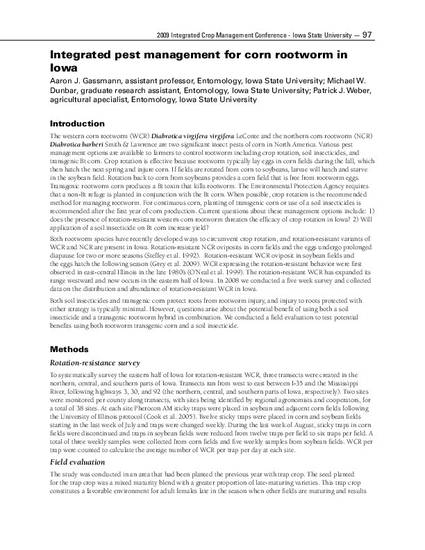
The western corn rootworm (WCR) Diabrotica virgifera virgifera LeConte and the northern corn rootworm (NCR) Diabrotica barberi Smith & Lawrence are two significant insect pests of corn in North America. Various pest management options are available to farmers to control rootworm including crop rotation, soil insecticides, and transgenic Bt corn. Crop rotation is effective because rootworm typically lay eggs in corn fields during the fall, which then hatch the next spring and injure corn. If fields are rotated from corn to soybeans, larvae will hatch and starve in the soybean field. Rotation back to corn from soybeans provides a corn field that is free from rootworm eggs. Transgenic rootworm corn produces a Bt toxin that kills rootworm. The Environmental Protection Agency requires that a non-Bt refuge is planted in conjunction with the Bt corn. When possible, crop rotation is the recommended method for managing rootworm. For continuous corn, planting of transgenic corn or use of a soil insecticides is recommended after the first year of corn production. Current questions about these management options include: 1) does the presence of rotation-resistant western corn rootworm threaten the efficacy of crop rotation in Iowa? 2) Will application of a soil insecticide on Bt corn increase yield?
Available at: http://works.bepress.com/aaron_gassmann/75/
